An artisan exploring a new form of folk craft after the Great East Japan Earthquake has been collaborating with companies and incorporating characters from around the world to reinvigorate the industry with fresh ideas. We asked her about the earthquake’s influence on her thinking and the ideas that go into her work.
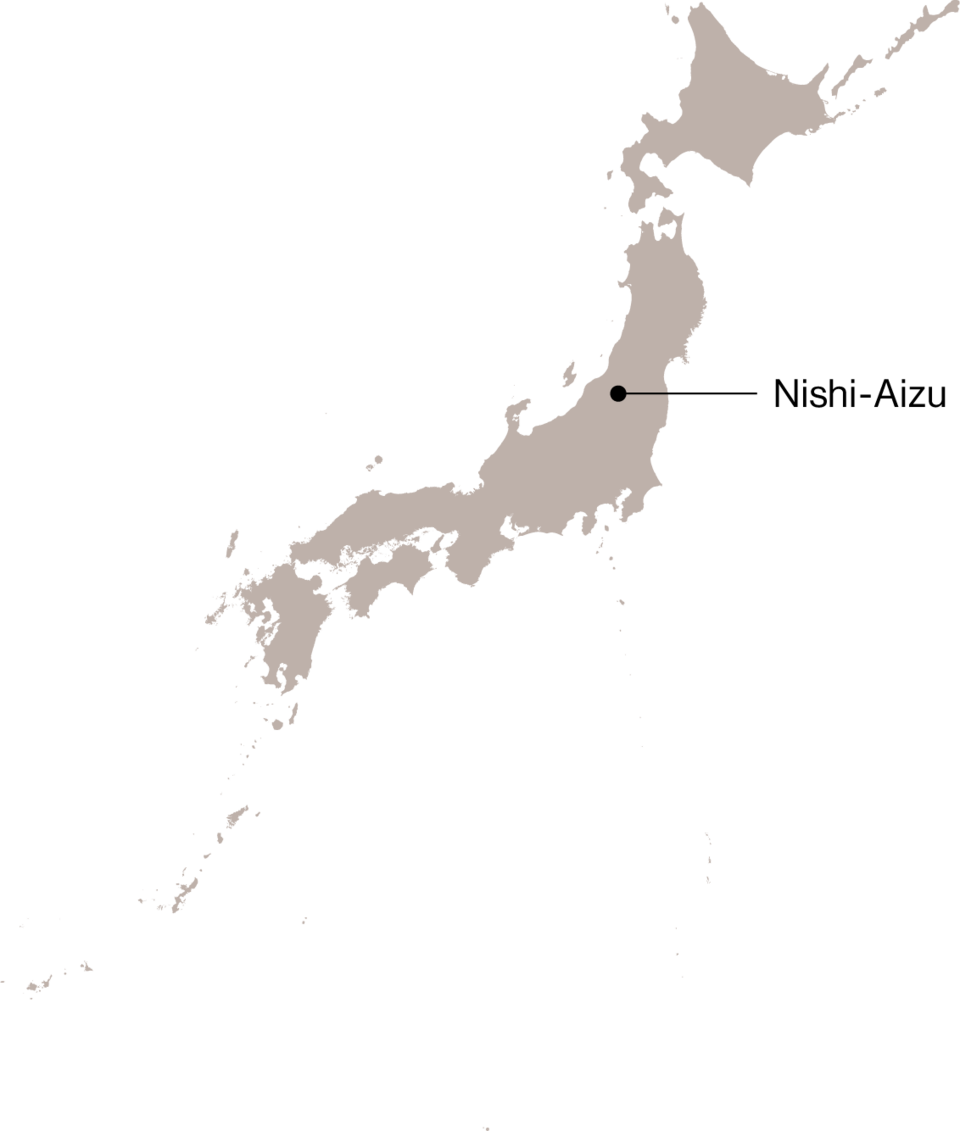
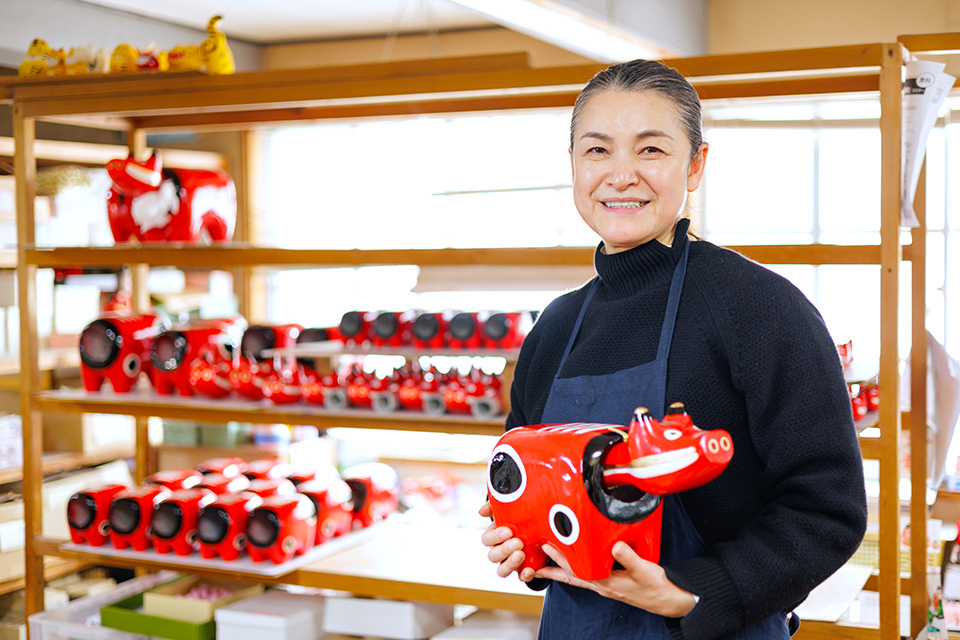
HAYAKAWA Minako with akabeko ornaments (aka meaning red and beko meaning cow). Fukushima has several legends involving red cows that reputedly ended a plague and helped rebuild a temple destroyed in an earthquake.
An okiagari koboshi is an egg-shaped doll that generally imitates a child’s face and always stands back up when knocked down, while an akabeko is a red cow ornament with a swaying head. Both of those traditional papier-mâché folk toys are said to ward off misfortune. They come from the Aizu region in Fukushima Prefecture, which was severely damaged by the massive tremor—known officially as the Great East Japan Earthquake—that occurred in 2011.
Papier-mâché painter HAYAKAWA Minako said that when the earthquake struck, “It shook like nothing I’d ever experienced before. I felt sure that something terrible had happened.” The Nozawa Folk Arts workshop where she works lies in the inland Aizu region and did not suffer too much damage; the coastal areas of the prefecture, however, were afflicted by a tsunami in addition to the shaking of the earthquake, causing tremendous destruction.
“I felt uncomfortable about painting designs in a warm place while other people were under such stress at what was still a very cold time of year. On the other hand, I thought that even if I were to visit areas where the destruction was greatest, I couldn’t be of any help there.”
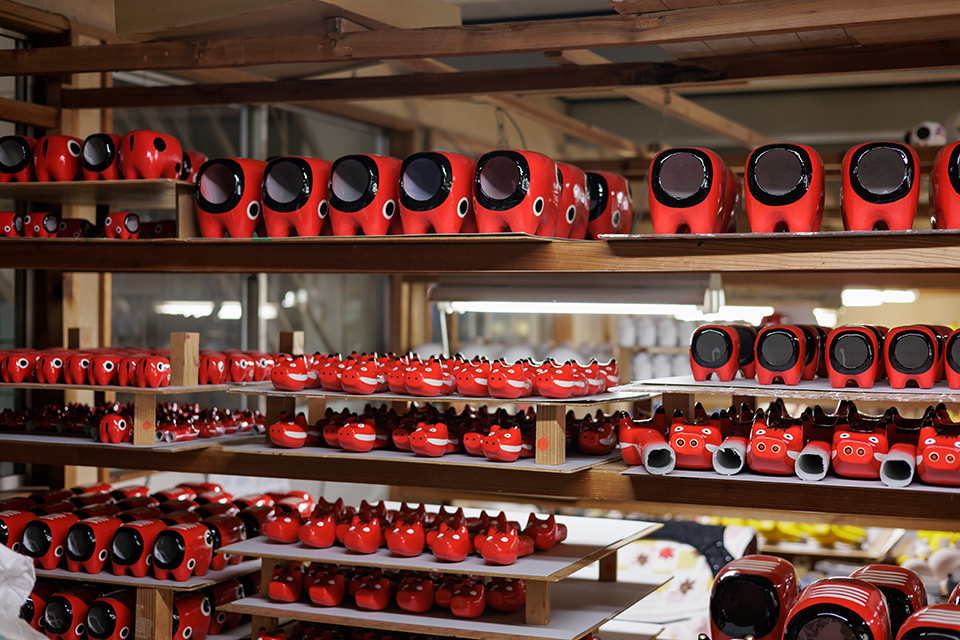
The workshop employs over 20 artisans, ranging in age from those in their 20s to those in their 80s, each of whom managing a different part of the papier-mâché-making process.
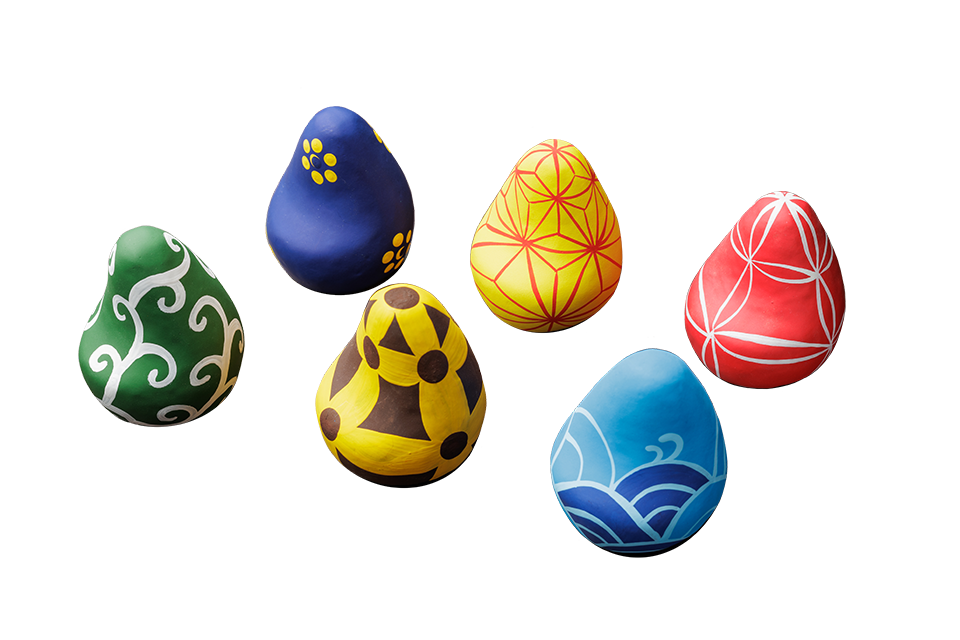
These okiagari koboshi are “wish balls” painted with traditional Japanese patterns. Each one represents a different wish, such as good health, prosperity of descendants, or business success.
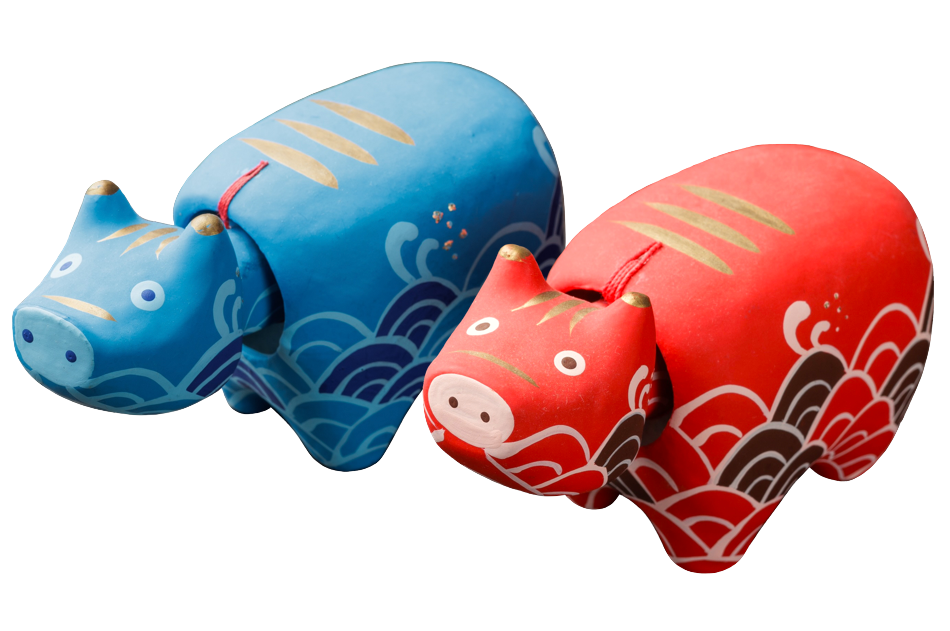
The ornamental cows painted with seigaiha patterns were created in response to the earthquake and subsequent tsunami. The red thread connecting the head and body is based on a Japanese legend about a red thread that connects people.
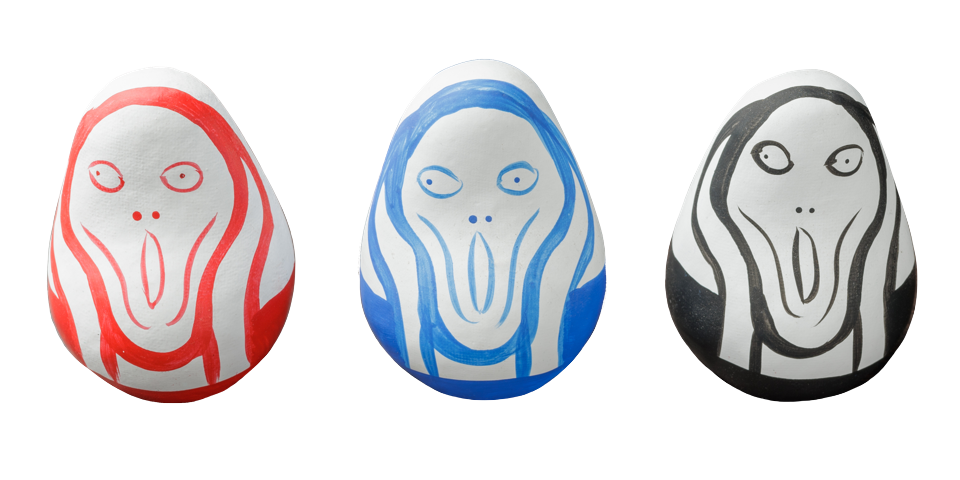
The Okiagari Munch ornaments were released in 2013 to celebrate the 150th anniversary of Edvard Munch’s birth.
At the time, a movement started to support the disaster area through the purchase of folk crafts. In addition to getting people to think about traditional folk crafts again, the movement spawned momentum to produce new works. Hayakawa noticed that this development was “connected to the reconstruction” in the form of giving impetus, so she started producing entirely new papier-mâché designs.
The first new item that she made was a negaidama, or “wish ball,” painted onto an okiagari koboshi with traditional auspicious Japanese patterns. Hayakawa later produced an ornamental cow with a wave crest pattern called seigaiha when she joined the Akabeko Project, which supports the affected region’s reconstruction through painting workshops and original akabeko exhibitions by creators from different fields.
Seigaiha is a traditional Japanese pattern; the endless wave design embodies the idea of everlasting happiness. On the other hand, the pattern is also reminiscent of the tsunami that caused such tragic devastation. “Although I hesitated to say so right after the earthquake, I never wanted people to forget the tsunami. I also painted the cow with this pattern to express determination to overcome the tsunami.”

These okiagari koboshi are “wish balls” painted with traditional Japanese patterns. Each one represents a different wish, such as good health, prosperity of descendants, or business success.
An official from the Scandinavian Tourist Board (now Visit Norway) who saw Hayakawa’s ambitious work approached her with an entirely unexpected idea for the reconstruction effort: a papier-mâché Okiagari Munch based on The Scream, the best-known work by Norwegian painter Edvard Munch. Hayakawa was initially puzzled, but was won over when she came to understand that the history of The Scream—which had been stolen and returned several times—shares something in common with the okiagari koboshi dolls that always stand back up after being knocked down. The work was an instant hit, showing the world the skilled crafting and allure of Fukushima’s papier-mâché.

The ornamental cows painted with seigaiha patterns were created in response to the earthquake and subsequent tsunami. The red thread connecting the head and body is based on a Japanese legend about a red thread that connects people.
Hayakawa and the workshop have always worked on original products with innovative designs and have conducted numerous collaborations with various companies. The workshop handles a wide variety of orders while respecting tradition and artisans and focusing on quality. Hayakawa said, “Just because something will sell doesn’t mean we have to make it. We always think about whether there is meaning for an item to be made in the form of Fukushima papier-mâché and question ourselves if the artisans are being pushed too hard.”

The Okiagari Munch ornaments were released in 2013 to celebrate the 150th anniversary of Edvard Munch’s birth.
Fukushima papier-mâché connects people with a wish for a happy future. Hayakawa’s current goal is to pass on this tradition—rediscovered due to the earthquake—to future generations.
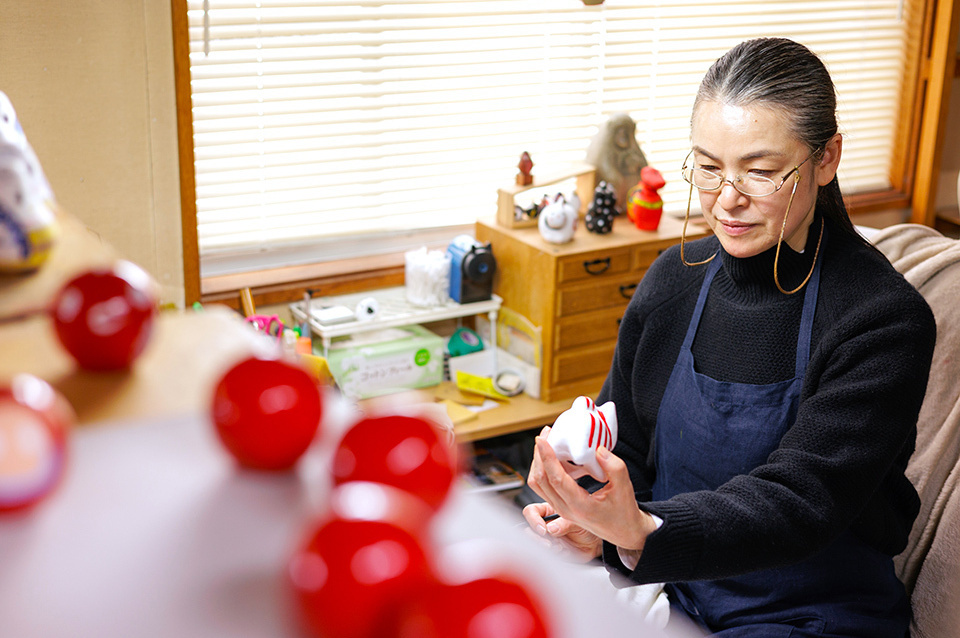
Hayakawa shown painting an ornament. She is the president of Nozawa Folk Arts in Nishi-Aizu, Fukushima Prefecture. She has been surrounded by papier-mâché craftsmen, including her father, who is the workshop’s former president, since she was a child. After finishing high school, she took over painting duties at the workshop.
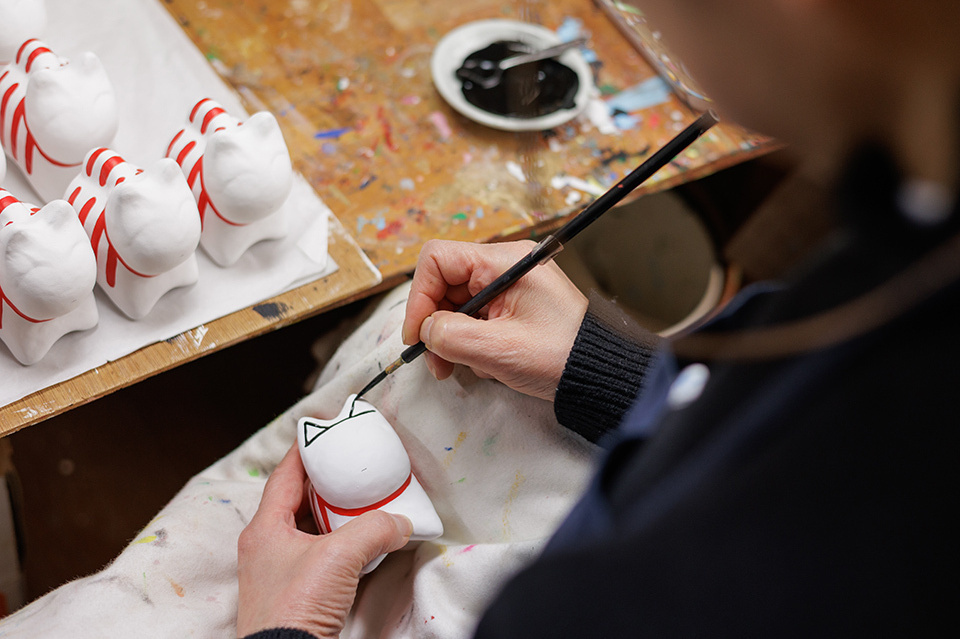
Painting on paper pasted over a wooden mold and dried. Part of the appeal of the handcrafted works is their subtle differences in expression.






























